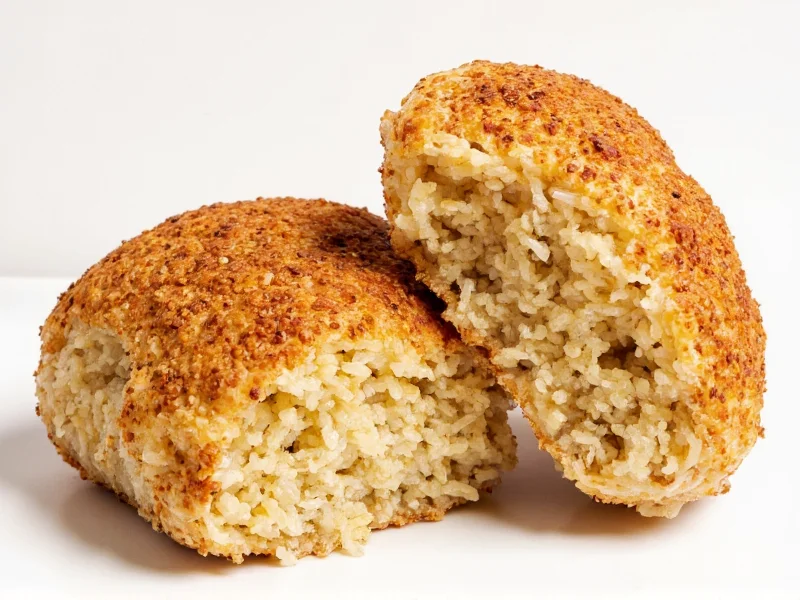When you're preparing traditional Spanish paella and can't find bomba rice, knowing the right substitute makes all the difference between an authentic dish and a disappointing meal. Bomba rice, the prized grain of Valencia, has unique properties that allow it to absorb nearly three times its volume in liquid without becoming mushy—critical for perfect paella. But when your local market doesn't stock this specialty rice, understanding your alternatives becomes essential for culinary success.
Why Bomba Rice Matters in Spanish Cooking
Bomba rice (Oryza sativa var. bomba) stands apart from other rice varieties with its short, plump grains and exceptional liquid absorption capacity. Unlike standard rice varieties that might absorb 1.5-2 times their volume, bomba can handle up to 3 times its volume in broth while maintaining distinct grain structure. This characteristic creates the coveted socarrat—the caramelized crust at the bottom of authentic paella that chefs prize as the dish's crowning achievement.
The rice's high amylose content (24-26%) gives it this remarkable ability to swell vertically rather than horizontally, preventing the mushiness that plagues inferior substitutes. When bomba isn't available, selecting the right alternative requires understanding these technical properties to maintain your dish's integrity.
Top Bomba Rice Alternatives Compared
Not all rice substitutes perform equally in paella and other Spanish rice dishes. The following alternatives rank from most to least suitable based on absorption capacity, grain stability, and traditional usage in Spanish cuisine.
| Rice Variety | Absorption Ratio | Cooking Time | Best For | Where to Find |
|---|---|---|---|---|
| Calasparra | 1:2.5 | 18-20 min | Authentic paella, seafood rice | Specialty stores, Spanish markets |
| Senia | 1:2.2 | 16-18 min | Valencian paella, mixed rice dishes | Specialty stores, online retailers |
| Arborio | 1:1.8 | 14-16 min | Creamy dishes, emergency paella substitute | Grocery stores worldwide |
| Carnaroli | 1:2.0 | 15-17 min | Risotto, adaptable for paella | Italian markets, specialty stores |
| Bomba Blends | 1:2.3 | 17-19 min | Paella when pure bomba unavailable | Specialty food retailers |
Detailed Analysis of Each Alternative
Calasparra Rice: The Premium Substitute
Often called "bomba's cousin," Calasparra rice shares D.O. (Denominación de Origen) status with bomba in Spain's Murcia region. With nearly identical absorption properties (1:2.5 liquid-to-rice ratio), Calasparra develops the perfect socarrat when cooked properly. The grains remain distinct while absorbing flavors beautifully, making it the top choice when bomba isn't available. Look for the official D.O. Calasparra seal to ensure authenticity—many inferior products falsely claim this designation.
Senia Rice: The Valencian Secret
Lesser-known outside Spain but equally prized by locals, Senia rice offers 22-24% amylose content—slightly less than bomba but significantly more than standard rices. Its shorter cooking time (16-18 minutes versus bomba's 18-20) makes it practical for weeknight cooking while maintaining excellent texture. Senia works particularly well in mixed paellas with meats and vegetables, as its slightly softer texture accommodates varied ingredients better than pure bomba.
Arborio Rice: The Accessible Option
While Arborio remains the most common substitute in North America, it requires technique adjustments. With only 18% amylose content, Arborio absorbs less liquid and releases more starch, creating a creamier texture that works against traditional paella. To compensate when using Arborio as a bomba rice alternative for paella, reduce liquid by 25% and shorten cooking time by 2-3 minutes. Stir minimally to prevent excess starch release, and expect a slightly different texture profile—more creamy than distinct.
Carnaroli Rice: The Versatile Compromise
Favored by Italian chefs for risotto, Carnaroli's 22% amylose content makes it surprisingly suitable as a bomba substitute. Its firm texture holds up well in paella when cooked with precise liquid ratios. Unlike Arborio, Carnaroli maintains grain integrity better, though it lacks bomba's vertical swelling property. For authentic results, use a 1:2 liquid-to-rice ratio and allow proper resting time after cooking to achieve the characteristic dry-but-moist paella texture.
Bomba-Style Blends: The Convenient Solution
Several specialty brands now offer bomba-style blends combining 30-50% actual bomba rice with complementary varieties. These provide more authentic results than pure substitutes while remaining more accessible than 100% bomba. When selecting these blends, check the ingredient list—products listing bomba as the first ingredient deliver noticeably better results than those where it appears further down.
Adjusting Your Technique for Different Substitutes
Simply swapping rice varieties rarely produces perfect results. Each bomba rice alternative requires specific technique adjustments:
- For Calasparra: Use identical technique to bomba rice, but check for doneness 2 minutes earlier
- For Senia: Reduce liquid by 10% and shorten resting time by 3 minutes
- For Arborio: Decrease liquid by 25%, avoid stirring, and finish cooking 3 minutes early
- For Carnaroli: Use 1:2 liquid ratio instead of bomba's 1:3, and spread ingredients more evenly
Regardless of substitute, always toast the rice in oil for 2-3 minutes before adding liquid—a critical step that enhances flavor absorption and prevents sticking. The traditional Spanish technique of arranging ingredients in specific patterns (meats first, then vegetables, then rice) remains essential for proper heat distribution.
Finding Quality Alternatives
When searching for bomba rice substitutes, focus on quality indicators rather than just availability. Look for:
- D.O. certification for Calasparra or authentic Spanish branding
- Opaque, unbroken grains with minimal powder residue
- Recent harvest dates (within 12 months for best results)
- Transparent sourcing information from reputable sellers
Online specialty retailers often provide better quality control than local grocery stores for these niche products. When purchasing Arborio or Carnaroli as bomba rice alternatives, choose premium brands that specify Italian origin rather than generic "risotto rice" which may contain inferior varieties.
When Substitutes Won't Suffice
Some traditional Spanish dishes simply won't achieve authenticity without proper rice. For paella valenciana or fideuà, substitutes work acceptably, but for arrós negre (black rice) or arrós caldoso, the unique properties of bomba prove irreplaceable. In these cases, consider ordering authentic bomba rice online—a worthwhile investment for serious Spanish cooking enthusiasts.











 浙公网安备
33010002000092号
浙公网安备
33010002000092号 浙B2-20120091-4
浙B2-20120091-4